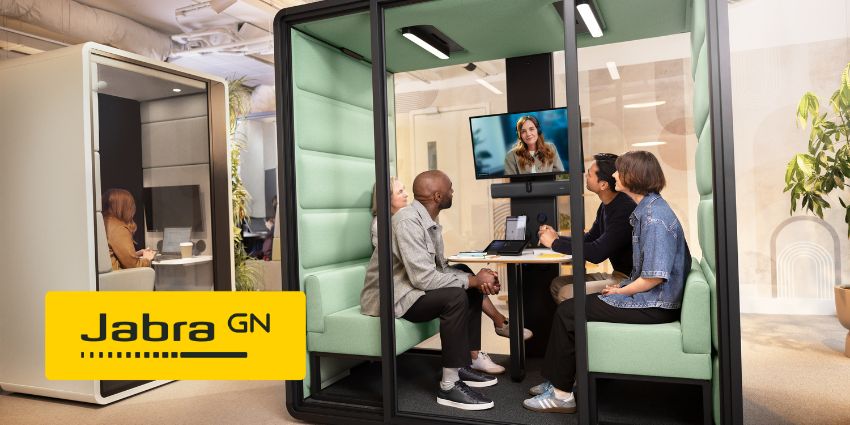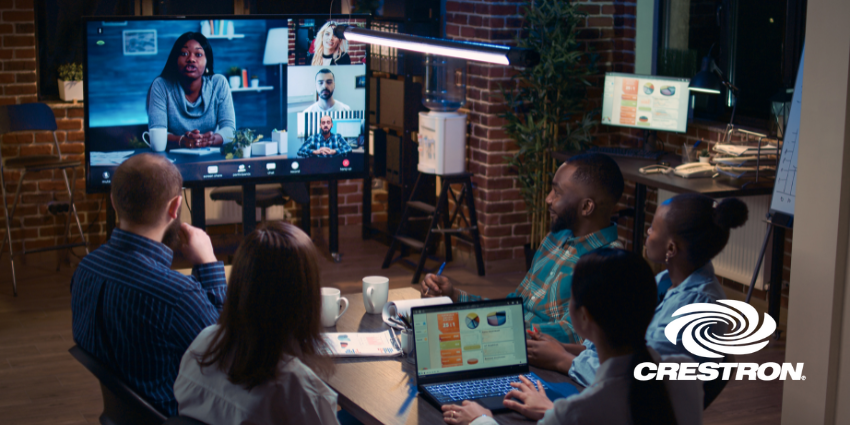AI is revolutionising the way we communicate and collaborate in the workplace. With rising adoption, one area where its impact is particularly noticeable is in meetings.
By transcribing and summarizing conversations and interactions between on-site and remote attendees, AI tools such as Microsoft 365 Copilot and Zoom AI Companion can generate accurate, searchable records and identify action items post-meeting.
In addition, AI can operate in real-time, actively listening to the meeting and offering prompts that can inspire attendees with questions and ideas.
This brings businesses several productivity benefits. Employee resources are no-longer wasted on notetaking. Attendees can direct their attention and brainpower to the actual purpose of the meeting. Moreover, AI tools can also be used to capture impromptu, in-room brainstorming sessions to provide context and notes, in addition to what would usually only be an unannotated photo of a whiteboard.
Indeed, such is the utility of AI in meetings that a recent Techtelligence/UC Today survey on AI in UC showed 55.2 per cent of respondents use AI for audio transcriptions. Additionally, 43.9 per cent surveyed said they use AI for smart meeting summarisation, condensing lengthy discussions into concise, actionable takeaways and making personalised follow-ups more focused and efficient.
Such outcomes speak for themselves. Respondents of the same survey rated AI’s impact on workforce productivity at an average of 3.7 out of 5 (with 5 being a high level of impact), and 64 per cent rated it at 4 or 5.
However, meeting AI tools currently face some challenges in reaching their full potential, particularly in the context of flexible workspaces and hybrid collaboration environments. Their effectiveness hinges on successfully processing quality input from the physical world, with clear voice capture being a critical, enabling factor.
Good Enough Audio Isn’t Good Enough Any More
High-quality audio is a cornerstone of effective hybrid collaboration. AI-driven tools rely on the intelligibility of the audio input to accurately do things like transcription, which forms the base of many other functions, like summarisation, personalised notetaking and follow-ups.
While UC platform providers like Microsoft Teams and Zoom are leading the market in terms of AI development, they can only apply their innovations to the audio “data” captured by the room systems. Bad data in means bad information out.
Audio quality that was deemed “good enough” in pre-AI times is no longer doing the job. Organisations that are serious about realising productivity gains from implementation of AI tools must equally ensure that their meeting room equipment captures high-quality audio so that AI models can do what they need to effectively.
The Challenges of Clear Voice Capture in AI-Powered Meetings
Imagine a scenario where you have an important meeting with your whole team, one that sets the direction for a critical project over the following months.
Of all the attendees present in the room, some are seated closer to the microphone(s) and some are further away; others speak quietly and some lean back in their seats or may even move around as they speak. Layer on top a reverberant or acoustically challenging room, and you have a mixture of audio issues to contend with.
Inconsistent audio pickup and lack of clear voice capture not only make it difficult for people on the far-end of the call to hear clearly and engage meaningfully, but when the meeting finishes, your AI agent has not accurately captured the conversations either, rendering meeting summaries useless.
Equally, if missing or incorrect transcription goes unnoticed, then employees may proceed with actionables that don’t consider the complete and accurate picture of what was said in the meeting.
Backtracking a chain of decision-making also becomes a guessing game. Ambiguous and unclear voice capture means AI has a tougher time in performing talker identification and attribution, making it impossible to keep track of who made what decision in which meeting.
This would necessitate someone listening to the recording, manually editing transcription, and generating another summarisation, thereby entirely negating the productivity enhancements that AI is meant to bring.
Maximising AI Investment with Quality Audio
Therefore, those purchasing licences for AI tools like Microsoft 365 Copilot and Zoom AI Companion, which can be a significant investment for companies, need to make sure their meeting audio technology is able to deliver the needed intelligibility and performance to bridge the gap between the physical and digital world.
By ensuring that meeting rooms are equipped with premium audio solutions, companies can maximise the effectiveness of their AI tools and achieve better business outcomes.
Embedding AI into Meeting Room Technology
Being mindful of potential gaps in the native AI offering of UC platforms, many companies are also looking at third-party applications to address communication and collaboration challenges.
Indeed, 48 per cent of the organisations in the Techtelligence/UC Today survey said they turn to external solutions to add AI features in their tech stack to overcome shortcomings in their core platforms.
Companies like Shure are focused on applying their unique expertise to enhance communication and collaboration experiences for their customers. In addition to hardware, their pursuit to deliver crisp audio into AI systems extends to software too, including AI- and ML-based technologies in audio processing solutions.
This sees additional audio-enhancing features such as the AI Denoiser and AI Deverb in Shure’s IntelliMix Room DSP software, which removes noise and distracting sounds in real time, and enhances speech clarity.
Shure also actively partners with UC platform providers to understand their platforms and develop solutions around that, helping end users to get the most out of AI innovations on both ends.
Such partnerships are approached earnestly by the UC providers too, as having better audio solutions on the market means better input into their systems and less work for their cloud to process all that data for AI to work with as intended.
This double-pronged approach to providing pristine audio fit for AI results in powerful collaboration solutions such as the Shure IntelliMix Room Kits for Microsoft Teams Rooms.
This complete, auto-configuring system gives a turnkey solution for your AI-powered meeting ambitions, easily scalable from small, medium, to large meeting spaces.
While AI is revolutionising the meeting room experience, its effectiveness is heavily dependent on the quality of the audio input it receives. By investing in high-quality audio solutions, businesses can ensure they’re getting the most out of their AI tools, leading to more productive meetings, better collaboration, and ultimately improved business outcomes.







